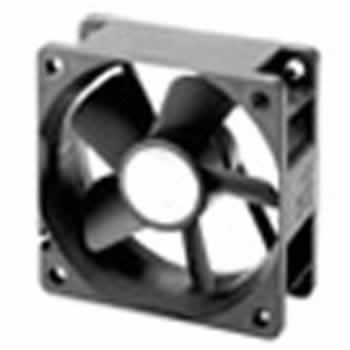Thermal Fans and Blowers
Thermal fans and blowers are indispensable components used in various industries to regulate temperature, dissipate heat, and ensure optimal performance of electronic devices and machinery. These powerful cooling solutions prevent overheating, extend the lifespan of critical components, and enhance overall system reliability. In this comprehensive product description, we will explore the world of thermal fans and blowers, their types, materials, applications, and how they play a crucial role in maintaining the efficiency and longevity of modern technology.
What are Thermal Fans and Blowers?
Thermal fans and blowers are mechanical devices designed to move air or gas to dissipate heat generated by electronic components or industrial processes. They work on the principle of forced convection, where the movement of air carries away heat from heat-generating sources, ensuring a cooler operating environment. Thermal fans and blowers come in various sizes and configurations to suit specific applications and cooling requirements.
Types of Thermal Fans and Blowers
Thermal fans and blowers are available in several types, each designed to cater to different cooling needs. Some common types include:
- Axial Fans: Axial fans are widely used for general cooling purposes. They generate airflow parallel to the axis of the fan, making them suitable for applications where high airflow is required.
- Centrifugal Fans: Centrifugal fans, also known as radial fans, direct airflow perpendicular to the fan's axis. They are ideal for applications requiring higher pressure and are commonly used in air conditioning systems and ventilation systems.
- Blower Fans: Blower fans are high-pressure devices that deliver a strong and concentrated airflow. They are well-suited for cooling applications in compact spaces and heavy machinery.
- AC Fans and DC Fans: Thermal fans and blowers can be powered by either alternating current (AC) or direct current (DC) sources. AC fans are commonly used in large appliances and industrial equipment, while DC fans are prevalent in electronic devices and automotive applications.
- EC Fans (Electronically Commutated Fans): EC fans are energy-efficient fans that use brushless DC motors, offering precise speed control and reduced power consumption compared to traditional AC fans.
- Crossflow Fans: Crossflow fans, also known as tangential fans, provide a wide and gentle airflow, making them suitable for cooling elongated surfaces, such as heat sinks.
Materials for Thermal Fans and Blowers
The materials used in the construction of thermal fans and blowers are crucial for their performance and durability. Common materials include:
- Plastic: Plastic fans and blowers are lightweight and cost-effective. They are commonly used in low-temperature applications and consumer electronics.
- Metal (Aluminum or Steel): Metal fans and blowers offer excellent heat dissipation and are commonly used in industrial and heavy-duty applications.
- Copper: Copper is an excellent conductor of heat, making it suitable for applications requiring high thermal efficiency.
- Composite Materials: Some fans and blowers are constructed using composite materials to achieve a balance of strength and weight savings.
Thermal Fans and Blowers Applications
Thermal fans and blowers find applications in diverse industries and equipment, including:
- Computers and Servers: Cooling fans are vital for maintaining the temperature of computer components, such as CPUs and GPUs, during intensive tasks and gaming.
- Telecommunications: Telecommunication equipment, such as base stations and network switches, rely on fans and blowers for cooling and stable operation.
- Industrial Automation: In industrial automation, thermal fans and blowers help maintain stable temperatures in control panels and electrical enclosures.
- Automotive Cooling: Automotive cooling fans regulate the temperature of the engine and other critical components to prevent overheating.
- Medical Equipment: Medical devices, such as MRI machines and ultrasound systems, use fans and blowers to maintain precise operating temperatures.
- HVAC Systems: HVAC systems incorporate fans and blowers to circulate air and control indoor temperatures in residential and commercial buildings.
- Refrigeration and Cooling Units: Cooling fans are essential components in refrigeration units and cooling systems, ensuring optimal cooling efficiency.
Installation and Maintenance
Proper installation and maintenance are crucial for the optimal performance and efficiency of thermal fans and blowers. Regular cleaning and monitoring of fan blades and vents help ensure reliable cooling and prevent dust buildup.
Conclusion
In conclusion, thermal fans and blowers are essential components that contribute to the efficient and reliable operation of various devices and machinery. By dissipating heat and maintaining optimal temperatures, these cooling solutions help prevent thermal damage and extend the lifespan of critical components. Whether in electronic devices, industrial equipment, or automotive applications, thermal fans and blowers play a vital role in ensuring smooth and safe operations in modern technology.










